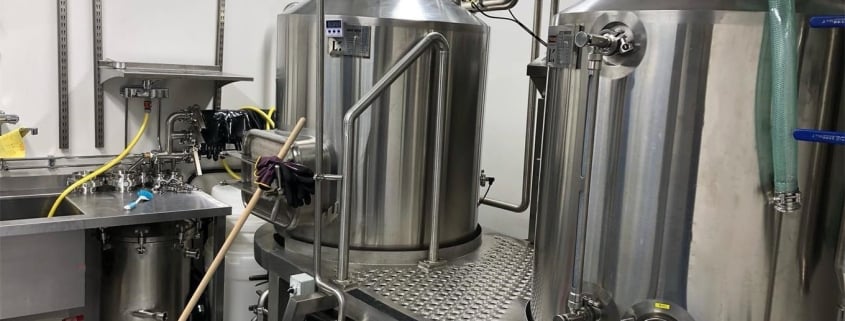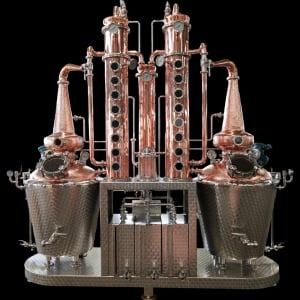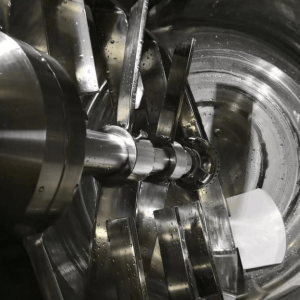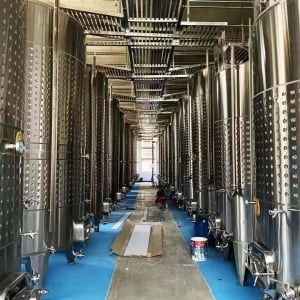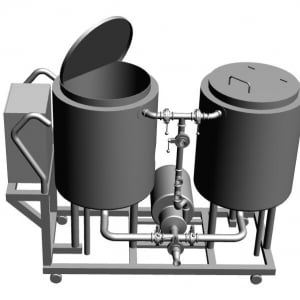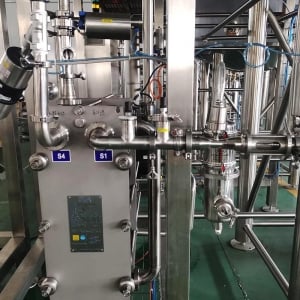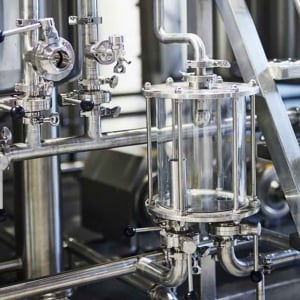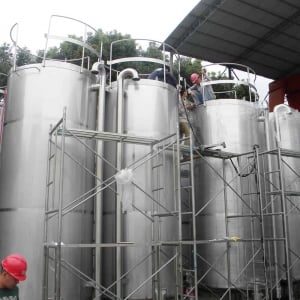Craft Brewery Equipment
Craft Brewery Equipment: A Comprehensive Guide to Building Your Brewery
Overview of Craft Brewery Equipment
Craft breweries have surged in popularity, captivating beer enthusiasts with unique and flavorful brews. If you’re considering starting a craft brewery, understanding the equipment is crucial. Craft brewery equipment is the backbone of the brewing process, and choosing the right setup can make or break your business. This guide dives deep into the essential equipment, the brewing process, and everything you need to know to start a successful craft brewery.
Why is Craft Brewery Equipment Important?
Imagine trying to paint without brushes or canvas; the same logic applies to brewing without the proper equipment. The right craft brewery equipment ensures consistent quality, efficient production, and safety in your brewing operations. Whether you’re a seasoned brewer or a novice, this guide will walk you through the intricacies of craft brewery equipment, helping you make informed decisions that align with your brewing goals.
Essential Craft Brewery Equipment
Starting a craft brewery requires a significant investment in equipment. Here’s an overview of the essential tools you’ll need to get your brewery up and running:
1. Brewhouse
The brewhouse is the heart of any brewery. It consists of several key components where the brewing process begins:
- Mash Tun: The mash tun is where malted grains are mixed with water to convert starches into fermentable sugars. It’s crucial for creating the wort, the sweet liquid that will eventually become beer.
- Lauter Tun: After mashing, the wort is transferred to the lauter tun, where it is separated from the spent grains. The design and efficiency of your lauter tun can significantly impact your brew’s clarity and quality.
- Boil Kettle: The wort is boiled in the kettle, where hops are added to impart bitterness, flavor, and aroma to the beer. This step is also vital for sterilization.
- Whirlpool: After boiling, the wort is transferred to a whirlpool to separate hop particles and other solids from the liquid, ensuring a clean transfer to the fermentation tanks.
2. Fermentation Vessels
Fermentation vessels are where the magic happens—where yeast converts sugars into alcohol and carbon dioxide. The choice of fermenter depends on your production scale and the types of beer you plan to brew:
- Conical Fermenters: These are the most common in modern breweries. Their conical shape allows easy removal of yeast and trub (sediment).
- Unitanks: Unitanks are versatile as they serve both fermentation and conditioning purposes. They can handle the entire process from fermentation to carbonation, simplifying the brewing process.
3. Conditioning Tanks
Conditioning tanks are used for aging beer and allowing flavors to mature. This step can range from a few weeks to several months, depending on the beer style. These tanks help in carbonating the beer and preparing it for packaging.
4. Heat Exchangers
Heat exchangers are critical for rapidly cooling the wort after boiling. Quick cooling prevents unwanted bacterial growth and ensures the wort is at the right temperature for fermentation.
5. Pumps and Hoses
Pumps and hoses are essential for moving liquids between tanks during the brewing process. They should be food-grade and capable of handling the heat and pressure associated with brewing.
6. Glycol Cooling System
Temperature control is crucial in brewing, especially during fermentation. A glycol cooling system helps maintain precise temperatures in fermentation tanks, ensuring consistent beer quality.
7. Cleaning and Sanitation Equipment
Cleanliness is paramount in brewing. Sanitization equipment, such as CIP (Clean-In-Place) systems, ensures all brewing vessels and pipelines are sterilized, preventing contamination.
8. Packaging Equipment
Finally, once your beer is ready, it needs to be packaged. Depending on your distribution plans, you’ll need bottling, canning, or kegging equipment. Automated systems can speed up the packaging process and maintain quality control.
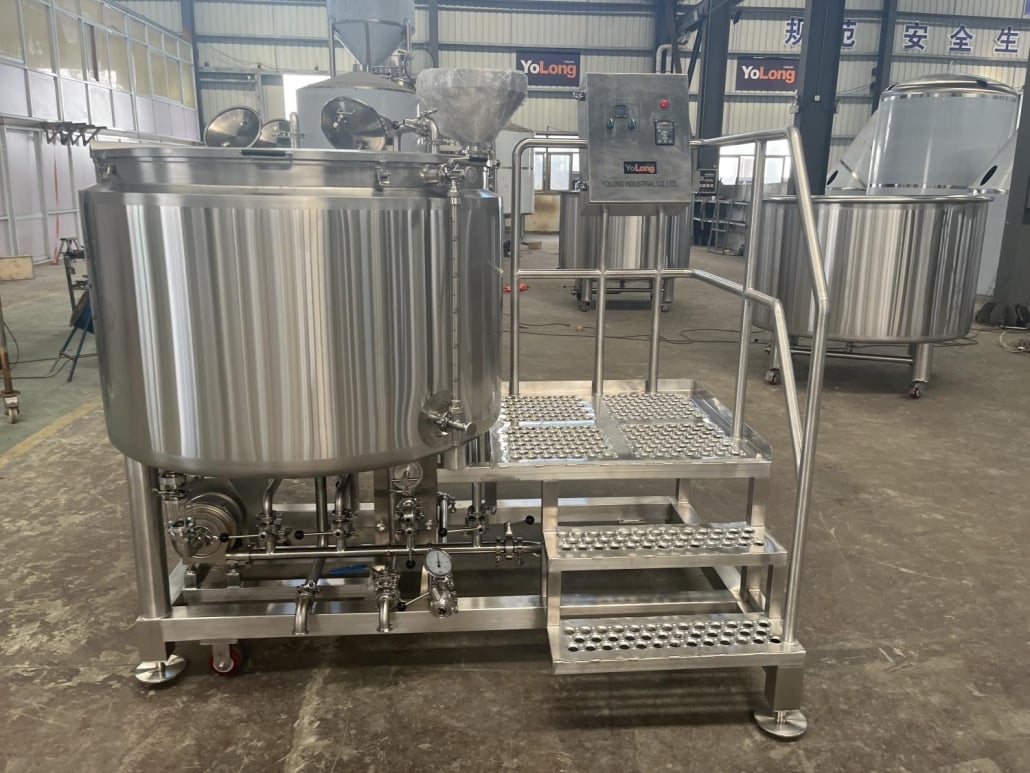
Understanding Different Types of Craft Brewery Equipment
The equipment in a craft brewery varies depending on the size, capacity, and specific needs of the brewery. Here’s a detailed table summarizing the types of equipment you’ll encounter:
| Equipment Type | Purpose | Key Features | Common Materials |
|---|---|---|---|
| Mash Tun | Converts starches in malt into fermentable sugars | Insulated, temperature-controlled, agitators | Stainless Steel |
| Lauter Tun | Separates wort from spent grains | False bottom, sparging arms | Stainless Steel, Copper |
| Boil Kettle | Boils wort, hops addition, sterilization | High heat resistance, steam jackets | Stainless Steel |
| Whirlpool | Separates hop particles, clarifies wort | Tangential inlet for creating whirlpool effect | Stainless Steel |
| Fermentation Vessels | Ferments wort into beer | Conical bottom, temperature control | Stainless Steel, Glass |
| Conditioning Tanks | Matures and carbonates beer | Pressure-rated, often jacketed for temperature control | Stainless Steel |
| Heat Exchanger | Cools wort rapidly after boiling | Plate or tube design, large surface area | Stainless Steel, Copper |
| Pumps and Hoses | Transfers liquids between brewing vessels | Food-grade, high pressure and heat resistance | Rubber, Silicone |
| Glycol Cooling System | Maintains temperature in fermenters and conditioning tanks | Chiller unit, glycol reservoir, insulated piping | Various |
| Packaging Equipment | Bottles, cans, or kegs finished beer | Automated or semi-automated, various output capacities | Stainless Steel |
| Cleaning Equipment | Sanitizes brewing equipment | CIP systems, caustic solutions, acid sanitizers | Stainless Steel, Plastics |
The Brewing Process: From Grain to Glass
Understanding the brewing process is just as important as having the right equipment. Let’s walk through the steps to see how your equipment fits into the picture:
Step 1: Milling the Grain
The brewing process begins with milling the malted barley. This step cracks the grains open, exposing the starches inside. The milling process affects the efficiency of the mash, as too fine a grind can lead to a stuck mash, while too coarse can reduce the extraction of fermentable sugars.
Step 2: Mashing
Once milled, the grain is mixed with hot water in the mash tun, where the starches are converted into sugars. The temperature and duration of the mash affect the body, sweetness, and alcohol content of the beer. Precision is key, which is why modern mash tuns come with temperature control systems.
Step 3: Lautering
After mashing, the sweet wort is separated from the spent grains in the lauter tun. The wort is carefully collected while the grains are sparged (rinsed) with hot water to extract any remaining sugars. The quality of this step influences the clarity and flavor profile of the final beer.
Step 4: Boiling
The wort is then transferred to the boil kettle, where it is boiled for 60 to 90 minutes. During this stage, hops are added to impart bitterness, flavor, and aroma. The boiling process also sterilizes the wort and stops enzymatic activity from the mash.
Step 5: Whirlpooling
After boiling, the wort is moved to the whirlpool, where it is spun to separate solid particles, such as hop residues and coagulated proteins, from the liquid. This step ensures a clean transfer to the fermentation vessel, minimizing the risk of contamination.
Step 6: Cooling
The hot wort must be rapidly cooled before it can be fermented. This is achieved using a heat exchanger, where the wort passes through plates or tubes that cool it down by transferring heat to cold water or glycol. Rapid cooling is crucial to prevent the growth of unwanted microorganisms.
Step 7: Fermentation
Once cooled, the wort is transferred to fermentation vessels, where yeast is added. Fermentation is where the wort transforms into beer as yeast converts sugars into alcohol and carbon dioxide. Temperature control during fermentation is critical, as different yeast strains require specific temperature ranges to thrive.
Step 8: Conditioning
After fermentation, the beer is transferred to conditioning tanks, where it is allowed to mature. During conditioning, flavors develop, and the beer is carbonated. The length of conditioning varies depending on the beer style; lagers, for example, require longer maturation periods than ales.
Step 9: Packaging
Once conditioned, the beer is ready for packaging. Whether you choose to bottle, can, or keg your beer, the packaging process must ensure the beer remains fresh and carbonated. Automated packaging lines can increase efficiency and reduce the risk of oxidation.
Step 10: Cleaning and Sanitation
Cleaning and sanitizing the brewing equipment after each batch is essential to prevent contamination. Proper cleaning protocols, including the use of CIP systems, ensure that your brewery remains a safe and sanitary environment for beer production.
Craft Brewery Equipment: Capacity, Space, Design, Layout, and Customization
When setting up a craft brewery, several factors must be considered, including the capacity of your equipment, the space available, and the design and layout of your brewery. Customization options are also essential for meeting your specific brewing needs.
| Factor | Details |
|---|---|
| Capacity | Brewery equipment comes in various sizes, typically measured in barrels (bbl). A barrel is equal to 31 gallons. Equipment ranges from small 1-2 bbl systems for microbreweries to 30+ bbl systems for larger operations. |
| Space Requirements | Space is a crucial consideration when planning your brewery layout. The size of your brewing space will determine the capacity of the equipment you can install. For instance, a 10-bbl brewhouse might require a space of approximately 800-1000 square feet, including room for fermentation tanks, storage, and packaging areas. Make sure to allow space for future expansion. |
| Design | The design of your equipment should be tailored to your brewing style. For instance, traditional British-style ales might benefit from open fermenters, while modern IPAs might require closed conical fermenters for better control of the fermentation process. |
| Layout | Efficient workflow is key in a brewery. Your equipment layout should minimize the movement of materials and products while ensuring easy access for cleaning and maintenance. Common layouts include linear, U-shaped, and L-shaped configurations, depending on your space. |
| Customization | Many equipment manufacturers offer customization options to fit your brewery’s unique needs. Customizations might include additional temperature control, specialized fittings for specific brewing styles, or automated systems for increased efficiency. |
Suppliers and Price Range of Craft Brewery Equipment
Choosing the right supplier is essential when purchasing craft brewery equipment. Below is a summary of various suppliers, their offerings, and the typical price ranges for craft brewery equipment:
| Supplier | Equipment Offerings | Price Range | Key Features |
|---|---|---|---|
| ABC Brew Systems | Complete brewhouse setups, fermentation vessels, packaging lines | $50,000 – $500,000 | Customization options, turnkey solutions |
| BrewTech Solutions | Modular brewing systems, standalone fermenters, and conditioning tanks | $40,000 – $400,000 | Modular designs, suitable for expansion |
| Stainless Brew Works | High-end stainless steel tanks, kettles, and CIP systems | $60,000 – $600,000 | Premium materials, advanced automation |
| EcoBrew Equipment | Sustainable brewing systems, energy-efficient heat exchangers, and eco-friendly packaging lines | $45,000 – $450,000 | Focus on sustainability, lower operational costs |
| BrewMaster Systems | Custom-built brewhouses, fermentation vessels, packaging, and glycol cooling systems | $55,000 – $550,000 | Bespoke solutions, extensive after-sales support |
| ProBrew Equipment | Full-scale brewery setups, bottling and canning lines, and advanced temperature control systems | $70,000 – $700,000 | Advanced technology, high output capacity |
Installation, Operation, and Maintenance of Craft Brewery Equipment
Setting up and running a craft brewery involves more than just purchasing equipment. Proper installation, operation, and maintenance are crucial for long-term success.
| Aspect | Details |
|---|---|
| Installation | Installing brewery equipment is a complex process that often requires professional assistance. This includes positioning tanks and kettles, connecting plumbing and electrical systems, and ensuring everything is compliant with local regulations. Some suppliers offer installation services as part of the purchase package, while others might recommend third-party installers. It’s essential to work with experienced professionals to avoid costly mistakes. |
| Operation | Operating brewery equipment requires knowledge and experience. Training staff to handle the equipment safely and efficiently is crucial. Many suppliers offer training programs to help brewers understand the intricacies of their systems. Regular operation checks and calibration of instruments are necessary to ensure consistency in beer production. Operating procedures should be documented and reviewed regularly to maintain high standards. |
| Maintenance | Regular maintenance of brewery equipment is essential to prevent breakdowns and extend the lifespan of the machinery. This includes routine cleaning, lubrication, and inspection of parts. A maintenance schedule should be established and adhered to, with detailed records kept of all maintenance activities. Some equipment, like pumps and heat exchangers, may require more frequent attention, while tanks might need periodic inspection for corrosion or leaks. |
How to Choose the Right Craft Brewery Equipment Supplier
Selecting the right supplier for your craft brewery equipment is a critical decision. Here’s a guide to help you make the best choice:
| Consideration | Details |
|---|---|
| Reputation | Research the supplier’s reputation in the industry. Look for customer reviews, testimonials, and case studies. A reputable supplier will have a track record of delivering high-quality equipment and excellent customer service. |
| Product Range | Consider the range of products offered. A supplier with a comprehensive product line can provide all the equipment you need from a single source, simplifying the procurement process. |
| Customization Options | If you have specific requirements, look for suppliers that offer customization. This might include bespoke tank sizes, specialized fittings, or unique automation features tailored to your brewing style. |
| Support and Training | Ensure the supplier offers robust after-sales support and training. This is particularly important for new brewers who may need guidance on operating and maintaining the equipment. |
| Price vs. Value | While price is important, it’s crucial to consider the overall value. Cheaper equipment might save money upfront but could lead to higher maintenance costs or operational inefficiencies in the long run. Evaluate the total cost of ownership. |
| Delivery and Installation | Check the supplier’s policies on delivery and installation. Some suppliers include these services in the purchase price, while others may charge extra. Ensure you understand the full costs associated with your purchase. |
| Warranty and Guarantees | Review the warranty and guarantees offered by the supplier. A solid warranty can provide peace of mind and protect your investment. Look for suppliers who stand behind their products with clear, comprehensive warranty terms. |
Comparing Pros and Cons of Different Craft Brewery Equipment Options
When choosing craft brewery equipment, it’s essential to weigh the advantages and disadvantages of different options. Here’s a comparison to help guide your decision:
| Equipment Type | Advantages | Disadvantages |
|---|---|---|
| Conical Fermenters | Efficient yeast collection, easy to clean, minimizes contamination risk | Higher cost compared to traditional flat-bottom fermenters |
| Flat-Bottom Fermenters | Lower initial cost, simple design | Harder to clean, increased risk of contamination |
| Automated Packaging Lines | Increases efficiency, reduces labor costs, consistent packaging quality | High initial investment, complex to operate and maintain |
| Manual Packaging | Lower cost, allows for flexibility in small batch runs | Labor-intensive, higher risk of inconsistencies, slower production rate |
| Glycol Cooling Systems | Precise temperature control, essential for high-quality fermentation | Expensive to install and operate, requires regular maintenance |
| Traditional Cooling Methods | Lower cost, simpler installation and operation | Less precise temperature control, can lead to inconsistencies in fermentation |
| Stainless Steel Equipment | Durable, easy to clean, resistant to corrosion | Higher upfront cost compared to other materials like plastic or aluminum |
| Plastic Equipment | Lower cost, lightweight | Less durable, prone to scratching and bacterial growth, not suitable for long-term use in commercial brewing |
Factors to Consider When Choosing Craft Brewery Equipment
Choosing the right craft brewery equipment involves several key factors. Here’s what you should keep in mind:
- Brewery Size and Production Goals: Your brewery’s size and the volume of beer you plan to produce will dictate the scale of the equipment you need. A small brewpub will have different requirements than a production brewery with wide distribution.
- Budget: Craft brewery equipment can be expensive. Setting a clear budget is essential to avoid overspending. Remember to factor in not just the cost of the equipment but also installation, maintenance, and operation.
- Space Availability: The physical space you have will determine the size and layout of your equipment. It’s important to maximize efficiency while ensuring that there is enough room for staff to work comfortably.
- Expansion Plans: Consider your future plans. If you intend to scale up production, it might be worth investing in equipment that can grow with your business. Modular systems that allow for additional tanks or larger capacity down the line can be a smart investment.
- Brewing Style: Different beer styles may require different equipment setups. For example, if you plan to focus on lagers, you’ll need additional fermentation time and storage, which might require more conditioning tanks.
- Technical Expertise: Some equipment is more complex and requires a higher level of technical expertise to operate and maintain. Ensure that you or your team have the necessary skills, or that the supplier provides adequate training and support.
- Compliance and Regulations: Ensure that the equipment you choose meets all local and federal regulations. This includes safety standards, food-grade materials, and environmental regulations. Non-compliance can lead to costly fines or operational delays.

FAQ
Here’s a list of frequently asked questions about craft brewery equipment, formatted in a table for clarity:
| Question | Answer |
|---|---|
| What is the most important equipment in a craft brewery? | The brewhouse is the most critical equipment in a craft brewery, as it includes the mash tun, lauter tun, boil kettle, and whirlpool—all essential for producing wort. |
| How much does it cost to start a craft brewery? | The cost of starting a craft brewery varies widely but typically ranges from $250,000 to $1 million, depending on the scale, location, and specific equipment choices. |
| How do I choose the right fermentation vessel? | Choose a fermentation vessel based on the type of beer you plan to brew, your production scale, and your budget. Conical fermenters are preferred for their ease of use and cleaning. |
| Is it better to buy new or used brewery equipment? | New equipment offers the latest technology and warranties, while used equipment can save money upfront but may come with higher maintenance costs and shorter lifespans. |
| What maintenance is required for brewery equipment? | Regular cleaning, lubrication, inspection, and calibration are necessary to maintain brewery equipment. A detailed maintenance schedule should be followed to prevent breakdowns. |
| Can I customize my brewery equipment? | Yes, many suppliers offer customization options to fit your specific brewing needs, including size, design, and additional features like automation or specialized fittings. |
| How long does brewery equipment last? | With proper maintenance, brewery equipment can last 10-20 years or more. Stainless steel equipment, in particular, is known for its durability and long lifespan. |
| Do I need a glycol cooling system? | A glycol cooling system is highly recommended, especially if you plan to produce lagers or other temperature-sensitive beers, as it provides precise temperature control. |
Conclusion
Starting a craft brewery is an exciting venture, but it requires careful planning and investment in the right equipment. From the brewhouse to the packaging line, each piece of equipment plays a crucial role in producing high-quality beer. By understanding the different types of equipment, their functions, and how to choose the right suppliers, you can set up a successful and efficient brewery. Remember to consider your production goals, budget, and future expansion plans when selecting your equipment. With the right tools and knowledge, you’ll be well on your way to crafting exceptional brews that stand out in the ever-growing craft beer market.

